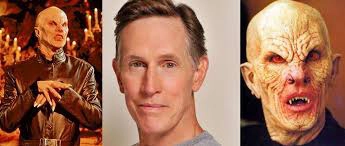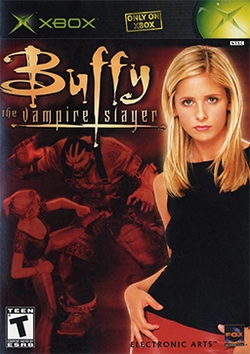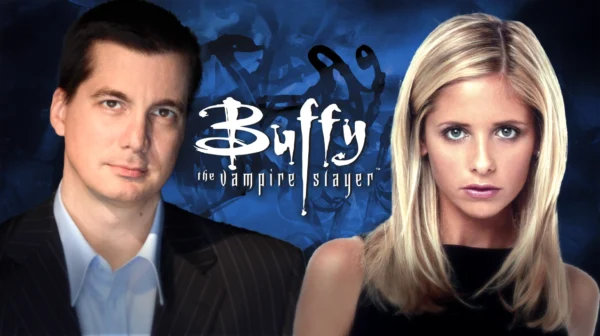Introduction: A Hidden Gem in the Buffyverse
Before D.C. Douglas became the smooth-talking supervillain of your nightmares (hello, Albert Wesker), he was a vampire with a flair for the theatrical—and no, not the sparkly kind. In 2002, tucked inside a now cult-beloved beat-’em-up called Buffy: The Vampire Slayer, Douglas voiced The Master, the big bad of Season 1, resurrected via game disc for one last boss battle. It’s not just a random gig—it’s patient zero for Douglas’s video game career, and low-key, a fascinating moment in the history of voice acting for licensed games.
<img class="aligncenter size-full wp-image-26462" src="https://dcdouglas.com/wp-content/uploads/2025/06/buffy-the-vampire-slayer-the-master-copy.webp" alt="DC Douglas The Master Buffy The Vampire Slayer” width=”500″ height=”271″ />
When Century City Was Sunnydale
The gig came to Douglas in true early-2000s fashion: no audition, no fanfare—just a call from a studio he’d worked with doing B-movie promos. “They stuck me in a tiny booth in Century City,” Douglas recalls. “No team, just me and the engineer. It was like ordering fast food, but for villainy.”
Back then, game VO wasn’t the red-carpet business it is today. “It was bare bones,” he says. “You walk in, get handed 12 pages of dialogue, and they go, ‘Cool, now be evil.’” The character? The Master, originally played by Mark Metcalf on the TV series. “I thought, ‘Why isn’t Mark doing it?’ But apparently, established TV actors thought video games were beneath them back then. Also, he lived on a ranch and didn’t like to leave unless it was for something big. So… I’m the understudy of darkness.”

The Buffy Boom
 In 2002, Buffy the Vampire Slayer was still riding high. The show had moved from The WB to UPN, viewership was solid, and Sarah Michelle Gellar’s cheekbones had their own fandom. But for the video game, she didn’t return. Instead, voice actress Giselle Loren stepped in for Buffy, while Douglas joined a surprisingly robust lineup that included Alyson Hannigan, Nicholas Brendon, David Boreanaz, Anthony Head, James Marsters, and Charisma Carpenter. Basically, the dream Scooby Gang reunion—plus one new Master.
In 2002, Buffy the Vampire Slayer was still riding high. The show had moved from The WB to UPN, viewership was solid, and Sarah Michelle Gellar’s cheekbones had their own fandom. But for the video game, she didn’t return. Instead, voice actress Giselle Loren stepped in for Buffy, while Douglas joined a surprisingly robust lineup that included Alyson Hannigan, Nicholas Brendon, David Boreanaz, Anthony Head, James Marsters, and Charisma Carpenter. Basically, the dream Scooby Gang reunion—plus one new Master.
Douglas hadn’t seen much of the show. “I’d catch an episode here and there, but I wasn’t a die-hard. More like an LA actor hoping for a guest spot.” While it wasn’t an on-camera guest spot, once cast in the video game, he dove in. “They played me clips of Mark Metcalf, and I just… did my version. Honestly, it sounds like a higher-pitched Albert Wesker. Foreshadowing, right?”
How One Vampire Opened the Gates
Douglas didn’t realize it at the time, but the gig would change his career. The engineer on Buffy referred him to Cup of Tea Productions, and from there? JRPGs, anime, and ultimately, Resident Evil. “That tiny little booth launched a thousand villains,” he laughs. “No one would’ve guessed.”
And no, he wasn’t thinking about fans. “It was my first game. I had zero followers. Zero expectations. Today we stress about every line on Nazis Live, er, X/Twitter, but back then? You showed up, yelled some evil stuff, and went home.”
Meanwhile, in 2002…
The gaming world was exploding. Xbox was new. GameCube was shiny. PlayStation 2 ruled all. Games like Vice City, Metroid Prime, and Wind Waker were redefining what video games could be. Meanwhile, Buffy the game entered the arena with a surprisingly solid beat-’em-up engine, rich with lore, combo-heavy gameplay, and an actual plot. Written like a mid-season episode, it even brought back The Bronze, Sunnydale High, and the obligatory sewers. Because video games always need sewers.
Plot? Please. There’s a Ritual to Stop.
The story centers on Buffy and her crew trying to prevent The Master’s resurrection. Along the way, Angel turns evil again (shocking!), Spike helps out (reluctantly), Willow slings spells, and Giles says things in that very Giles way. At the end? You guessed it: boss battle with a spectral Master. If you win, the day is saved. If you lose… well, it’s a video game. Try again.
Reception and Legacy
Critics were kind. Buffy: The Vampire Slayer landed a respectable 79 on Metacritic. Fans praised the character likenesses, the smooth combat, and the fact that someone thought to bring in *actual* cast members. There were complaints, of course—some repetitive levels, a few clunky mechanics—but overall, it stands as one of the better TV-to-game adaptations from that era.
Final Thoughts From the Master
Douglas looks back on it fondly. “It taught me to be sharp in the booth. You don’t get warmups in games. You get a line like ‘THE RITUAL IS ALMOST COMPLETE!’ and you better make it count. I think I did okay.”
So, Was It Good?
Look. It’s not The Last of Us. But it didn’t need to be. It was a fun, spooky romp through Sunnydale, backed by real performances, with a villain who chewed scenery like it was garlic-free. And for D.C. Douglas, it was the unexpected doorway into video game infamy. From the shadows of a forgotten sound booth… rose The Master. And then, eventually, Wesker. And a whole rogues’ gallery after that.
So Next Time You Play a Game…
…and you hear a voice that makes you shiver just a little? It might be a cultist, a scientist, or a tour guide. But it might also be the Master. And yes, he’s watching you.









